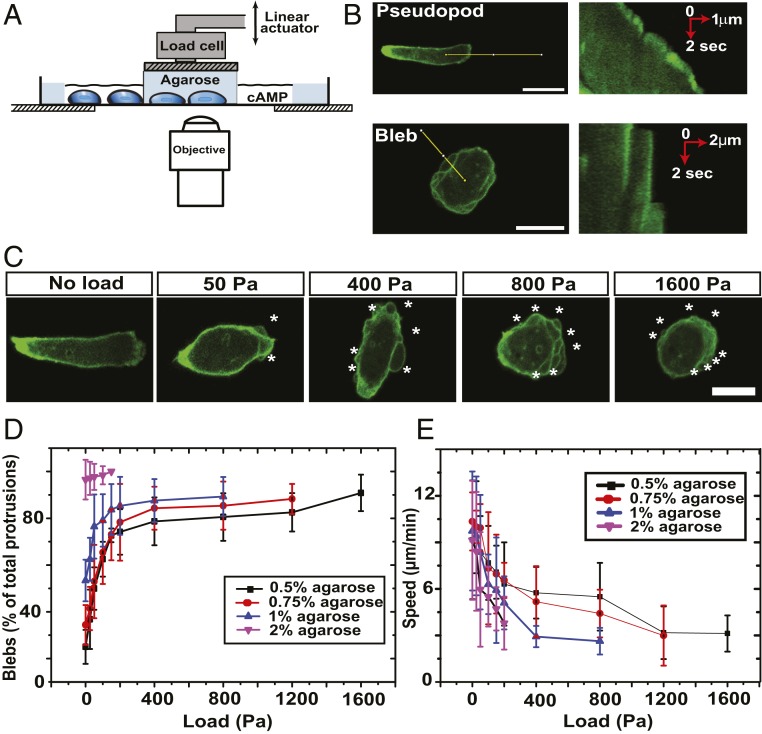Fig. 1.
Uniaxial load causes cells to move using blebs instead of pseudopods. (A) Diagram of the cell squasher used to apply uniaxial loads to cells moving under an agarose overlay (36). The load is applied using a plunger on the bridge between two wells cut into the agarose, one containing cells and the other, the chemoattractant cyclic AMP, which attracts the cells under the agarose toward it. (B) Distinction between pseudopods and blebs. At the Left are shown cells expressing an F-actin reporter, and at the Right, kymographs taken along the lines indicated at the Left. (Scale bar: 10 µm.) (C) Uniaxial load causes cells to migrate using blebs. The cells are migrating under an overlay of 0.5% agarose to which increasing uniaxial loads are applied. Blebs are indicated by white stars. (Scale bar: 10 µm.) (D) Blebbing of migrating cells increases with increasing load or overlay stiffness. (E) Cell speed decreases under increasing load or stiffness of the agarose overlay. The data are represented as mean ± SD for n ≥ 30 cells for each case with measurements made for about 30 min, starting 8 to 10 min after load was applied. The stiffness of the agarose overlays is as follows: 0.5% = 6.6 kPa; 0.75% = 11.9 kPa; 1% = 20.5 kPa; and 2% = 73.6 kPa. Aggregation-competent Ax2 cells expressing the ABD120-GFP reporter for F-actin and migrating toward cyclic AMP in KK2MC are used throughout.

